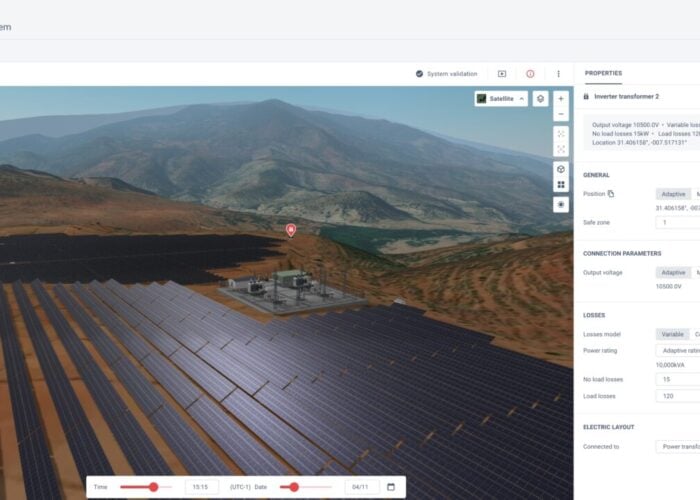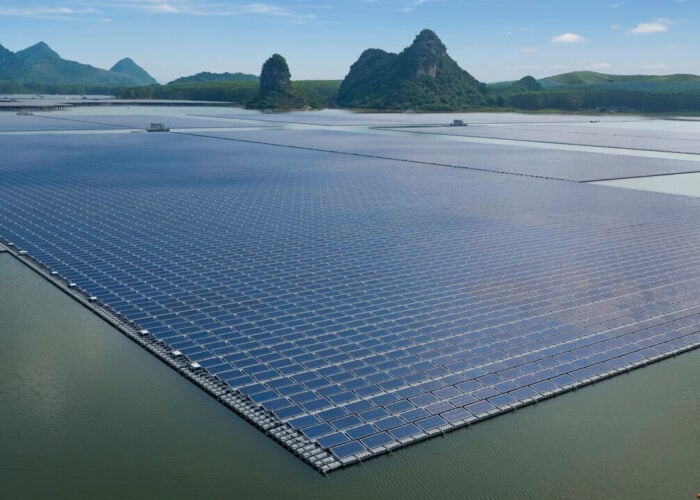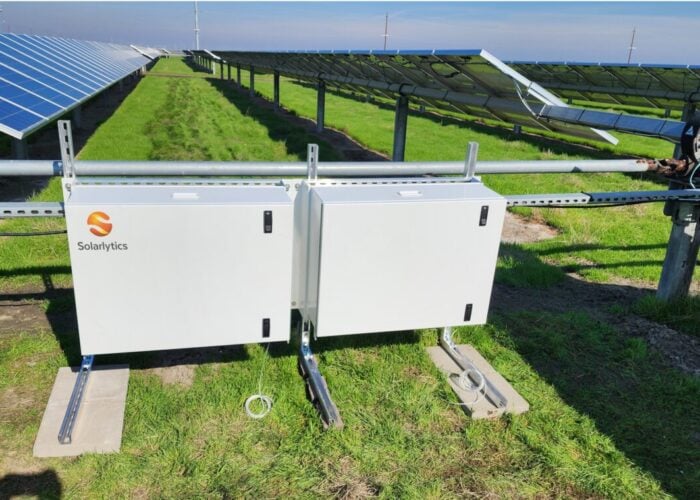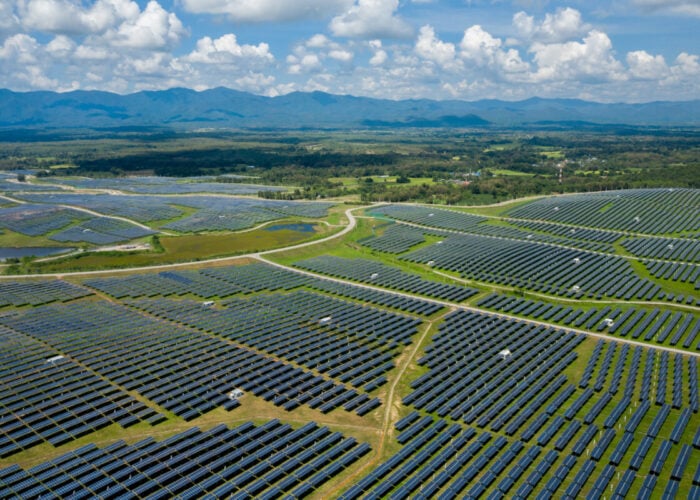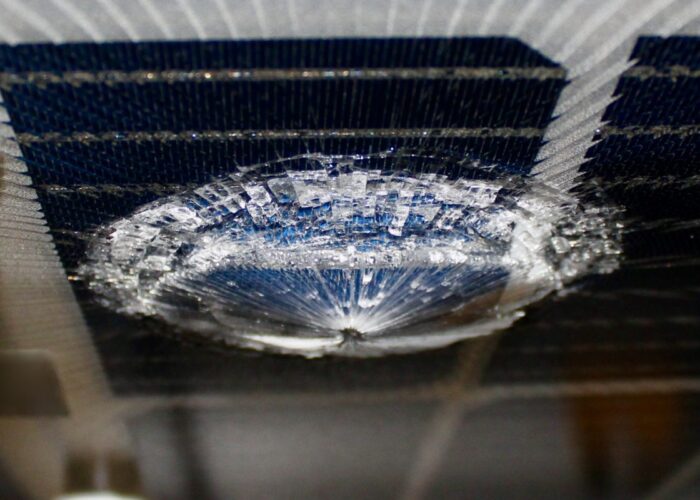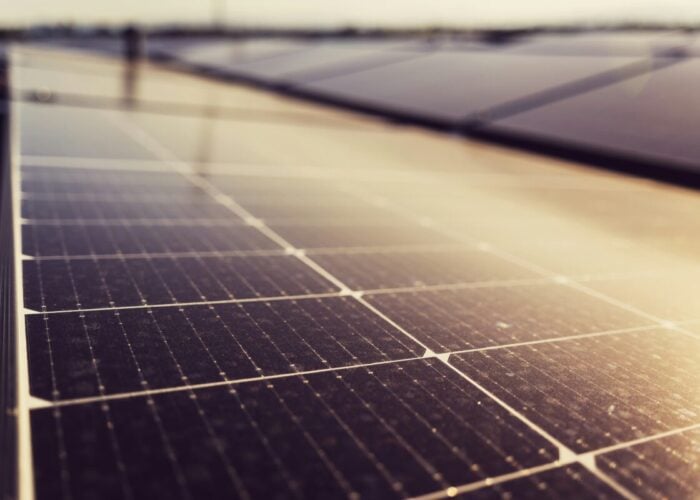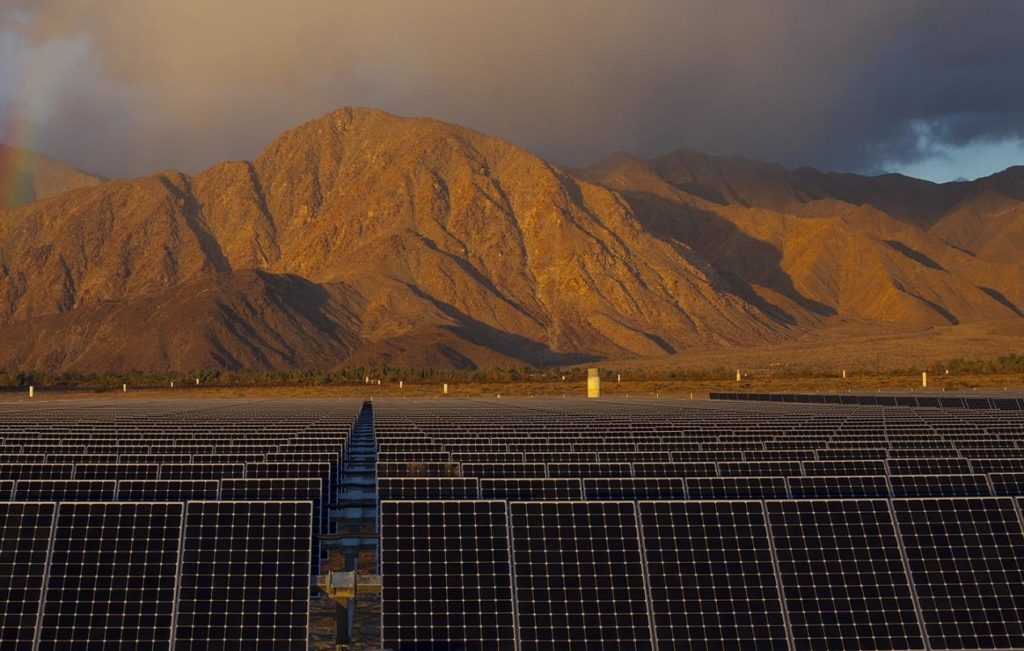
Amid an increasingly unpredictable environment and a rise in extreme weather events, the solar industry must properly use its available data to protect assets and reduce risks, writes Gareth Brown, CEO of digital asset performance technology provider Clir Renewables.
As our climate changes, extreme weather events pose an increasing threat to society and ecosystems globally. Over the last few decades, we have witnessed more frequent extreme weather patterns, leading to hotter days, increased snowfall, more intense lightning storms and larger hail. Such extremes are increasingly and significantly impacting our infrastructure and renewable energy is no exception.
Unlock unlimited access for 12 whole months of distinctive global analysis
Photovoltaics International is now included.
- Regular insight and analysis of the industry’s biggest developments
- In-depth interviews with the industry’s leading figures
- Unlimited digital access to the PV Tech Power journal catalogue
- Unlimited digital access to the Photovoltaics International journal catalogue
- Access to more than 1,000 technical papers
- Discounts on Solar Media’s portfolio of events, in-person and virtual
In the case of solar, while everyday weather conditions can impact a project’s ability to operate effectively and efficiently, surges in extreme weather events have a pronounced impact on the solar industry, prompting reviews of production estimates. Owing to the requirement for solar projects to maximise irradiance, solar panels are often located in exposed locations, heightening their vulnerability to climate-induced extreme weather events.
Faced with an increasingly unpredictable environment, it is crucial that we understand how solar assets can continue to operate effectively. And this is where understanding the data yielded by solar farms is essential.
At Clir Renewables, we use benchmarking data to guide service providers in addressing asset performance issues. In the case of wind, Clir’s artificial intelligence analyses turbine health and performance data in the context of the industry and their environment. This allows owners to develop a true understanding of the behaviour of their assets, identifying not only when the turbine is underperforming, but the root cause of this underperformance and how it compares to peers. Despite being commonplace across other forms of renewables, this deep-dive analysis has, in many instances, remained an afterthought in solar.
A sizzling summer for solar
According to AON Insurance’s quarterly disaster report, in the first nine months of 2022, there were 29 extreme weather events that caused more than US$227 billion in economic losses. These events include record-breaking droughts in the northern hemisphere accompanied by two separate extreme heatwaves in Europe which disrupted the cooling systems of nuclear and fossil fuel power plants, lowered hydropower generation and reduced the efficiency of solar panels. Likewise, hail in Texas early last summer resulted in estimated solar losses of more than US$300 million – more than twice as severe as other key renewable losses over the previous three years combined.
The evidence is plain – extreme weather events are increasing, and the solar industry needs to properly use its available data to protect assets and reduce risks.
A 2021 report into extreme weather by GCube Insurance highlighted that the average solar loss due to traditional natural catastrophes or extreme weather was almost 2,400% higher than the average non-weather-related solar loss in 2019, with 70% of solar losses in the last 10 years occurring since 2017.
The report states that “solar installations have sustained much greater damage than wind since 2020 in terms of both frequency and severity of claims, with both operational projects and those under construction equally exposed to losses”.
Indeed, climate change is now the number-one concern amongst insurers globally, according to AXA Insurance’s Future Risks Report 2022. When asked what aspect of climate change most concerns them, respondents overwhelmingly cited physical risks – such as floods, heatwaves, storms and rising sea levels – rather than other aspects such as risks related to liability for damages, or managing the transition to cleaner energy, as their primary concern.
Extreme heat and solar
The physical risks relating to extreme weather can impact the entirety of a solar installation. Heatwaves in particular can reduce the efficiency of PV modules, cause inverters to fail and worsen existing cell damage.
While weather such as hail can directly damage the modules themselves, the impact of extreme heat can be more nuanced. According to CED Greentech, a solar equipment supplier in the US, hot temperatures can reduce the output efficiency of solar modules by 10%-25%. With most solar modules having an 85-degree Celsius temperature limit, they are most efficient when operating at low temperatures.
Despite countries such as Germany announcing record-breaking solar power generation last summer, solar cells are likely not meeting their maximum capacity during such extremes – though these losses are more than offset by the additional yield. When temperatures soar above average, voltage is reduced, and the efficiency of the panels is presumed to decrease by 0.5 percentage points for every degree Celsius rise in temperature. Interestingly, while a lot of operators assume this is the case, data shows that the reality is closer to 1%.
While the impact of heat on solar cells is well understood, its effect on solar inverters is less clear. Although inverters contain semiconductor parts which lose efficiency as they heat up, these can tolerate high heat without breaking down – as evidenced by their presence in desert regions. Despite naturally generating heat through the conversion of DC power to AC power, heat in an inverter module needs to stay below a certain level to avoid degradation.
If an inverter becomes too hot, it usually switches itself off or reduces its power to such an extent that the higher ambient temperature does not cause it harm. This is known as temperature derating. During extreme weather, such as heatwaves, overheating warnings and derating become more frequent as the average temperature increases. While it is unclear whether a significant correlation exists between temperature and warnings, they should be taken seriously to prolong inverter lifespans and ensure asset yield is not lost.
Inverters and cells aside, one of the biggest issues faced by solar, when confronted by extreme heat, is the temperature within the wider PV module. Climate change has caused an increased uncertainty around the accepted “territory” for expected environmental risks and, when building solar farms, developers consider pre-existing data that includes on-ground measurements and long-term satellite irradiation averages. With solar efficiency dependent on thermal design to ensure optimum performance in specific territories, existing PV assets are increasingly at risk as our climate continues to warm and extreme heatwaves become more prevalent and unpredictable.
With PV module designs tailored to suit average regional temperatures, assets are woefully unprepared for ongoing extreme heat, which risks damaging electrical equipment bereft of adequate ventilation. Depending on the design and the region, heatwaves can cause permanent damage to PV modules and risk downtime as a result of repairs or retrofitting. While expensive, it may be necessary for pre-existing solar farms in traditionally cooler climes to consider re-assessing their ventilation to reduce longer-term ambient temperatures within the module. This can improve transformer lifetimes and decrease the chances of a catastrophic fire.
Solar fire risk
Located within PV modules, electrical transformers can take only so much punishment and, with record-breaking heatwaves pushing up electricity use, transformers are at risk of rapidly ageing. With solar sites staying warmer in the evening during prolonged periods of heat, transformers do not get a chance to recover. The increase in loading on a transformer creates a higher chance of failure for the equipment, which can lead to a power outage and even a catastrophic fire, resulting in total loss of the asset.
The deterioration of solar equipment as a result of extreme heat is likely to increase the chances of an arc fault – a discharge of electricity. The arc flash generated can occur in electrical cabinets during hot weather and risks damaging the solar farm and surrounding environment. In the US alone, between 2015 and 2018, the Fire Administration reported 155 fires caused by solar installations, with 84 occurring in residential systems and 71 in non-residential.
According to a report by Firetrace International, “There is a high likelihood that instances of solar farm fires are underreported”. A study conducted by European testing and certification company TÜV Rheinland – entitled ‘Assessing Fire Risks in Photovoltaic Systems and Developing Safety Concepts for Risk Minimization’ – concluded that, in approximately half of 430 cases of fire or heat damage in PV systems, the PV system itself was considered the “cause or probable cause”. Crucially, it notes that, within the solar industry, there remains “a severe lack of data on the prevalence of solar farm fires”.
Data is key
This lack of data stems beyond fire detection in the solar industry. With solar owner-operators not understanding the risks, they aren’t able to properly protect their assets from extreme weather and understand its true impacts financially, operationally and reputationally.
At Clir, we want the renewable energy sector to be resilient amidst a changing climate. By combining benchmarking data, machine learning and years of industry expertise, we work to help renewable energy stakeholders maximise their financial returns regardless of heat, hail or hurricanes.
To best understand your solar farm, and how to ensure maximum operation and preparedness for extreme weather events, data is key. Last year alone, utility-scale wind and solar PV electricity generation could face losses of up to US$22 billion from fixable technical underperformance issues relating to data.
Until recently, solar operations and maintenance (O&M) have been shaped by an over-reliance on inward-looking SCADA data. This data must be set in its geospatial context and be fed through a common model that considers all available on-site sensors, or else owners simply won’t know whether underperformance is due to a fault with the panel, cloud cover or shade caused by the immediate environment.
When monitoring a solar farm, we source data from multiple points across the solar array, with our automated detectors subsequently identifying instances of underperformance. These detectors range from partial performance detectors monitoring inverter derating, to soiling detectors analysing the impacts of both snowfall and intense rain, to curtailment and forced outage detectors. Through these, we are able to understand the impact of seasonal and extreme weather conditions across the year.
By evaluating historical weather forecasts and benchmarking against solar OEMs, assets in the field and industry peers, we train our artificial intelligence models to create adjusted production budgets. If there are significant discrepancies, owner-operators can potentially reassess their budgets or update their energy yield assessment. This enables better planning for day-today tasks like staffing, handling weather protocols and managing panel efficiency while understanding the risks impacting similar farms.
An understanding of inverter performance during heatwaves through our benchmarking offers visibility into issues associated with extreme weather and emboldens asset owners to decide whether these need to be addressed or simply managed in their current form.
We are currently developing detectors which will enable us to gain a deeper understanding of operational data, offering solutions into how solar projects can better withstand increasingly unpredictable climes. To cite a recent example, interesting learnings could come from the likes of Babcock Ranch in Florida and its ability to emerge from Hurricane Ian relatively unscathed.
With careful system planning, proper installation and professional maintenance, PV systems can still be operated reliably during heatwaves with inspection monitoring processes including heat-related sources of failure. If heat-related failures occur, the cause needs to be quickly identified and rectified to avoid lower yields, as well as technical damage.
Difficulties inherent in renewable energy data
Despite the strides made above, difficulties persist when analysing data for the solar market. This was a main motivator that led Clir to answer the call from our clients to apply our AI-driven monitoring and optimisation offering, and address glaring gaps in the solar data market.
Although the renewable energy industry harnesses an abundance of data, using it can be challenging. Stakeholders have limited time to ingest, standardise and analyse data, reducing their ability to truly dive into understanding it. When used properly, data can help to drive down the cost of insurance and financing on solar projects.
Along with managing the data, there are also inherent issues with solar energy data itself, in no small part due to a lack of industry standards. While we have witnessed the wind industry consolidate over the last two decades, the majority of solar projects tend to lack standardised data, with that available generally of a poor quality or availability. This stems from the fact that each OEM brings unique ways of recording event data and providing access to data. As projects are bought and sold, it’s also difficult to gain access to historical data across the different OEMs and stakeholders, with assets coming with previous data monitoring structures that can be difficult for portfolio owners to consolidate.
This problem is compounded further by the sheer number of OEMs in solar when compared to the likes of wind, making scalability more difficult in mixed solar portfolios without the accompaniment of adequate software solutions – of which there are few.
Without clean and standardised data, there’s also an issue with wasting time on false positives. Poor data quality can lead to errors when identifying issues with components. It’s important to understand what issues are actually impacting your farm, along with what issues are solvable, instead of wasting time on problems that may not be easy to manage.
Finally, across the industry, stakeholders lack access to global benchmarking data. This means that easily solvable problems are being missed because of a lack of knowledge. Leveraging learnings from industry data enables proactive the identification of errors and quantification of impactful optimisations, rather than relying on individual experience or biased data.
More data means more protection and assurance
At Clir, our artificial intelligence analyses solar asset health and performance data in the context of its environment. With our algorithms, we support owners in developing a true understanding of each asset’s behaviour and its relationship not just to its peers, but to the fleet and, ultimately, the wider industry. This means that asset owners can identify the likely impacts of extreme weather events along with day-today performance issues.
A lack of O&M innovation in recent years has resulted in project owners missing out on the performance potential of their solar assets. The market has become a race to the bottom, with everyone spending as little as possible on O&M and asset management – a key part of which is high-quality, comprehensive and properly labelled data collection. This has not gone unnoticed by our long-standing wind clients that also hold solar assets.
Plenty of data exists for renewable energy projects, both from individual portfolios and within the industry. However, with solar data standards not yet as mature as those in the wind industry, a lot of assumptions are used based on older projects which are now invalid in newer projects exposed to climate change-induced extremes.
By harnessing and sharing the data we have, owners can find increased success in their projects, both through increased performance, and lower O&M costs. To maximise the value of portfolios and continue driving investments, advocating for clean and transparent industry benchmarking data will become imperative.
Solar installations most exposed to our increasingly unpredictable climate are those whose data will be most valuable when dealing with the inevitable increase in extreme weather events. This data will be crucial in reassuring investors, owner-operators and the general public that solar is a resilient method of renewable energy that can deliver no matter the weather.
Author
Gareth Brown is the CEO and co-founder of Clir Renewables, a provider of digital asset performance technology for the renewable energy industry. With over a decade in renewable energy, Gareth has experience leading the identification, development, construction, financing and operation of renewable energy assets for a technical consultancy. He is an entrepreneur, chartered engineer with the IMechE and has degrees in mathematics and mechanical engineering.

